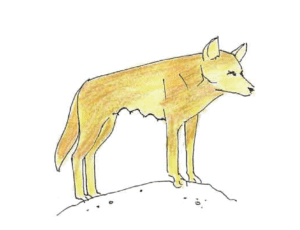CHAPTER TEN
Dogs are different to dingoes
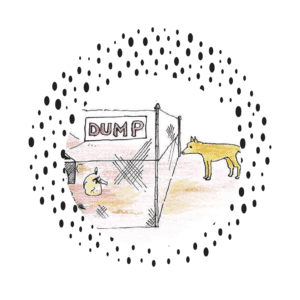
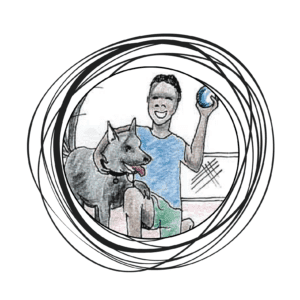
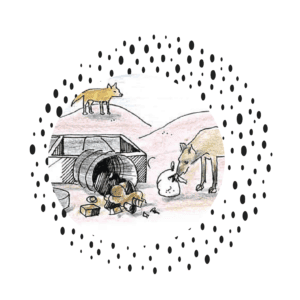
Words that are important to understand
‘Dingoes’
-
- Dingoes are a wild Australian dog, that can live without any help from humans.
- They have been in Australia long enough that some people say they are a native species.
- Many Aboriginal clans have had a close relationship with dingoes since dingoes arrived in Australia thousands of years ago.
‘Domestic dogs’
-
- Domestic dogs are pets that rely on humans for survival.
- In communities, domestic dogs are often called ‘camp dogs’.
- Domestic dogs come in many different sizes and breeds (e.g. Chihuahua, Kelpie, Great Dane etc.).
- Domestic dogs have only been in Australia since colonisation.’
‘Dingo-dog hybrid’
-
- A dingo-dog hybrid is a cross between a dingo and a domestic dog.
- Sometimes dingo-dog hybrids might be kept as pets in communities, but if dingo-dog hybrids are wild, they can cause lots of problems.
How are dingoes different from domestic dogs?
Even though they are both a type of dog, dingoes are quite different to domestic dogs.
Dingoes are well suited to surviving in the Australian bush. Over thousands of years, dingoes have adapted so that they can breed and hunt without help from people.
Breeding
Dingoes usually live in strong family packs of between 5 and 10 dingoes. The number of dingoes in the pack depends on how much food is around to support them.
While domestic dogs usually breed twice or more each year, dingoes usually only breed once each year.
Within the pack, most adult female dingoes will get pregnant and have pups. But because food can be hard to find, usually only one litter survives.
Dingoes normally only have between 3 and 5 pups per litter. Domestic dogs can have much lots more pups in each litter, and because people are feeding them, most domestic dog pups can survive.
Dingoes
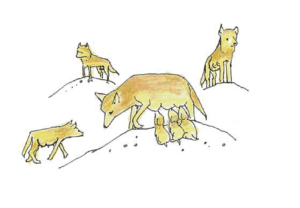
Domestic Dogs
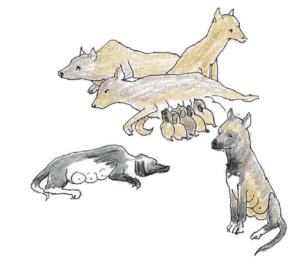
Hunting
While domestic dogs keep people company, dingoes have an important job looking after country.
By hunting, dingoes can help to keep the balance of animals in the Australian bush healthy:
-
- they take away sick and old animals
- they can help to keep introduced animals like rabbits under control
- they can help to stop big mobs of kangaroos and wallabies building up
While not all experts agree, some experts think that dingoes might help other wildlife by keeping feral predators like cats and foxes under control.
But, because they can also hunt and kill livestock, in farming areas, dingoes are usually not very popular with farmers or the government.
In places where there is farming, many dingoes are baited or trapped and killed as part of ‘wild dog management programs’.
What are the main threats to dingo populations?
1. Cross-breeding with domestic dogs
Hybrid dogs are a mixture of dingo and domestic dogs.
When dingoes and domestic dogs meet up, they can breed and create hybrid puppies.
Dingoes and domestic dogs can meet up and breed:
-
- when they are looking for food or water at areas like rubbish dumps
- when people go hunting and lose their hunting dogs in the bush
- when people leave their domestic dogs by themselves at outstations
- when people dump dogs in the bush
Hybrid dogs breeding with dingoes are a big problem for dingoes in Australia.
If hybrid dogs keep breeding with pure dingoes, there will be no more pure dingoes left.
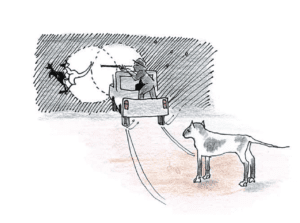
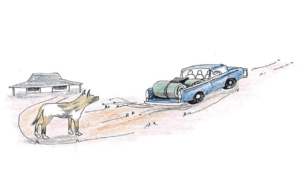
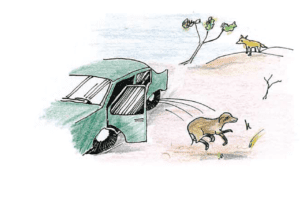
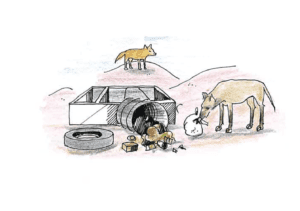
2. Baiting or trapping and shooting programs
Farms, stations and national parks can get permits to bait, or trap and shoot all types of wild dogs (including dingoes).
Baits are poison hidden in meat. A dog that eats a bait will die from the poison. 1080 is the most common poison used.
Traps are also laid for dingoes. If dingoes are caught in the trap, they are then shot.
When dingoes are killed by bait or shooting, their family pack can break apart. This can open up the territory for other dogs (including hybrid dogs) to move in.
Hybrid dogs that move into the territory can then start breeding with the dingoes that are left.
How can communities help to protect dingoes?
Because domestic and hybrid dogs can cause problems for dingoes, it is important that the EHP knows what the community can do to protect dingoes.
Communities can help protect wild dingo populations by:
1. Desexing their pet (domestic) dogs
Desexed dogs cannot breed with dingoes.
They are also less likely to roam.
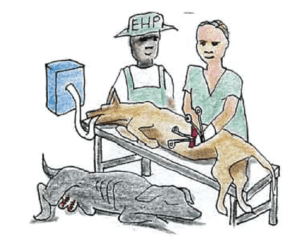
2. Looking after their pet dogs
If people do not control and feed their dogs, the dogs will go into the bush and hunt for food. They might also try to hunt livestock on nearby stations.
When dogs are roaming like this, they are more likely to come across baits. If the dogs take these baits, they will die.
If community members feed their dogs every day, and look after them well, the dogs won’t want to leave the community.
This helps to protect both the dogs and nearby livestock.
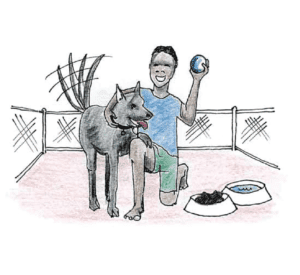
3. Not leaving dogs at outstations
Dogs shouldn’t be left alone at outstations for more than 1 day.
When families travel, they should take their dogs with them.
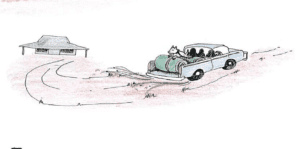
4. Fencing garbage dumps to stop scavenging dingoes and dogs meeting up
If the garbage dump is fenced, dingoes and dogs won’t be able to scavenge there.
If they aren’t meeting up, they won’t be breeding and making hybrid dogs.
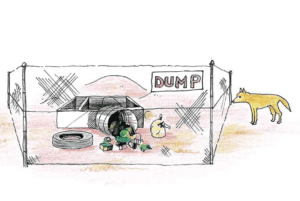
5. Leaving dingo pups in the bush
Dingoes do not make good pets.
When people find dingo pups in the bush, and bring them back to the community, the dingos often ends up getting euthanased for biting people.
Because of their wild instincts, when dingo pups grow up, they often want to leave the community and go back to live in the bush anyway.
They are a wild animal and should stay in the bush.
